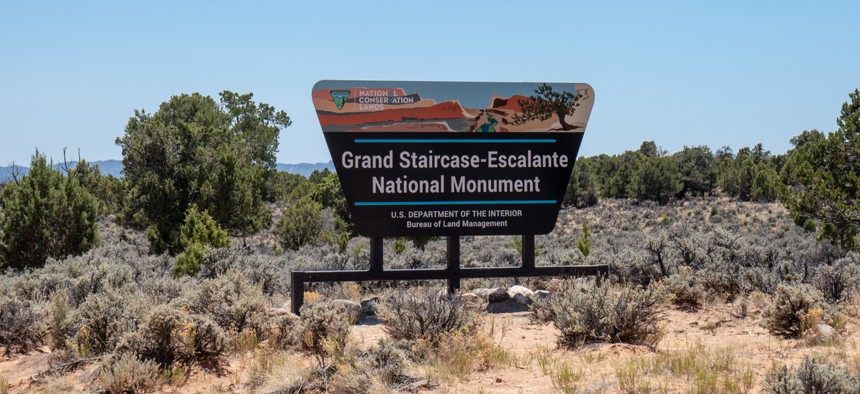A Setback for Trump's Plan to Slash Public Lands

Grand Staircase Escalante National Monument Shutterstock
Environmentalists and tribes won an early legal advantage in their battle to protect Bears Ears and Grand Staircase-Escalante National Monument.
If environmentalists defeat President Donald Trump’s order to strike conservation protections from more than 2 million acres of public land, they will likely have a minor legal ruling issued last week to thank.
On Tuesday, a federal judge in Washington, D.C., handed a procedural victory to the coalition of indigenous nations, outdoor-activity companies, and environmental groups suing the U.S. government over the cuts to two expanses of wilderness in Utah.
The decision sets the stage for the acrimonious legal battle to come, about whether President Trump can shrink Bears Ears National Monument by 85 percent and cut Grand Staircase-Escalante National Monument nearly in half. His cuts rank among the largest ever made to any national monument. Both monuments, located in southern Utah, were created by Democratic presidents.
Judge Tanya Chutkan’s ruling last week gave the environmentalists two key advantages in that fight. First, she ordered that the president’s legal opponents must receive advance notice of any plans to break new ground at the site. She also denied the government’s bid to transfer the case to a federal court in Utah, a jurisdiction that might have been more favorable to the president’s case.
The victories, though procedural, may ultimately prove crucial in the case. The groundbreaking decision is particularly key: It ensures that advocates will learn of any prospecting or oil-drilling activities before they occur. Heidi McIntosh, an attorney at the environmental group Earthjustice and a lead counsel in the case, told me that litigants could now ask the court to issue an injunction to stop environmentally destructive activities before they occur. Under normal circumstances, the Bureau of Land Management would not need to notify the public (or environmental groups) before approving some types of exploratory oil drilling or uranium mining.
“If there’s a need to ask a court for a preliminary injunction, we’ll have that information,” McIntosh said. “Otherwise, those activities could proceed and damage lands that may be in the monument, and we’d never know about it.”
Environmental groups could also hypothetically protest such disturbances if they learn of them in advance. McIntosh said she did not know of any plans to do so.
Judge Chutkan’s decision to keep the case in Washington may turn out to be equally important. That’s because every federal court in the United States has a different set of precedents that constrain and inform how its judges approach legal problems. (The U.S. Supreme Court is so powerful in part because its decisions alone constrain every other jurisdiction.) In D.C., courts have a particular expertise in reining in the power of the president. “Not surprisingly, the District of Utah does not,” McIntosh said. Keeping the trial in D.C. means that environmentalists can draw upon that far larger body of precedent.
Switching jurisdictions might have also undermined tribal claims in the case. The land called Bears Ears is sacred to six different indigenous nations. And though Bears Ears National Monument is located entirely within Utah’s borders, the same is not true of all six of those nations, as some have reservations located only in Arizona or New Mexico. Indigenous nations may therefore have lacked standing to sue Trump in Utah; they have a better case in Washington.
The Department of Justice is representing the government in the case. It declined to comment on an ongoing lawsuit.
Robinson Meyer is a staff writer for The Atlantic, where this article was originally published.
NEXT STORY: After the Storm Come the Mosquitoes






